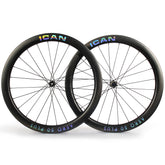The Switch: Is an Integrated Handlebar System Right for You?
introduction
Integrated handlebars are becoming increasingly popular as cyclists look to take advantage of every aerodynamic and weight-saving advantage. Instead of using the traditional separate stem and handlebar components, integrated designs are constructed as a single unit to optimize integration and performance. While they were once primarily found on time trial and triathlon bikes, today most modern road, gravel and even mountain bikes offer integrated cockpit options. Let’s look at what makes these handles an attractive choice.
design and construction
In the foundation, the integrated bars are forged as one solid piece with the stem, so there are no interfaces where separate parts come together. This creates a seamless transition without abrupt transitions that interrupt the airflow. Carbon fiber is widely used due to its light weight and durability, allowing designers to create intricate aero shapes. Internal cable routing further polishes the clean look and protects cables from damage.
aero advantages
The aerodynamic advantage of an integrated cockpit cannot be underestimated. By reducing the frontal area compared to standard configurations, the integrated handlebars cut through the wind with less turbulence. This can give riders valuable seconds on long flat or downhill stages. When time matters, every watt of free speed saved matters.
weight savings
In addition, integrated designs save valuable grams thanks to clever technology. By eliminating unnecessary material and joints, a carbon handlebar and stem combination can undercut the weight of traditional aluminum by 50g or more. Especially for mountain climbers, bikepackers or triathletes, this means less weight that they have to carry over tough climbs or marathon distances.

comfort advantages
In addition, integrated designs save valuable grams thanks to clever technology. By eliminating unnecessary material and joints, a carbon handlebar and stem combination can undercut the weight of traditional aluminum by 50g or more. Especially for mountain climbers, bikepackers or triathletes, this means less weight that they have to carry over tough climbs or marathon distances.
performance improvements
Perhaps the biggest advantage of integrated handlebars on the bike is their seamless integration into the frame. Without abrupt transitions where separate components meet, these handlebar-stem combinations improve control precision and feedback. Their aerodynamic and mass-saving benefits complement this improved handling. From time trials to enduro, cyclists in all disciplines can appreciate the increase in performance thanks to this integrated cockpit concept.
Disadvantages of integrated systems
Although integrated systems are practical, they also have some disadvantages that should be taken into account before making a purchase decision.
A big disadvantage is the cost. Replacing an entire system can be quite expensive, especially compared to the cost of upgrading individual parts. Another disadvantage of integrated systems is their inflexibility. Unlike systems that consist of independent parts, integrated systems cannot be customized to specific needs or preferences. Finally, the difficult installation of integrated systems can also pose a challenge. Routing the cables requires careful attention to ensure that everything is connected correctly and functions as intended. This can be time-consuming and may require the assistance of a professional installer, which can increase the overall cost of the system.
For more information, see the Road Bike Handlebars Guide and the Gravel Bike Handlebars Guide .





